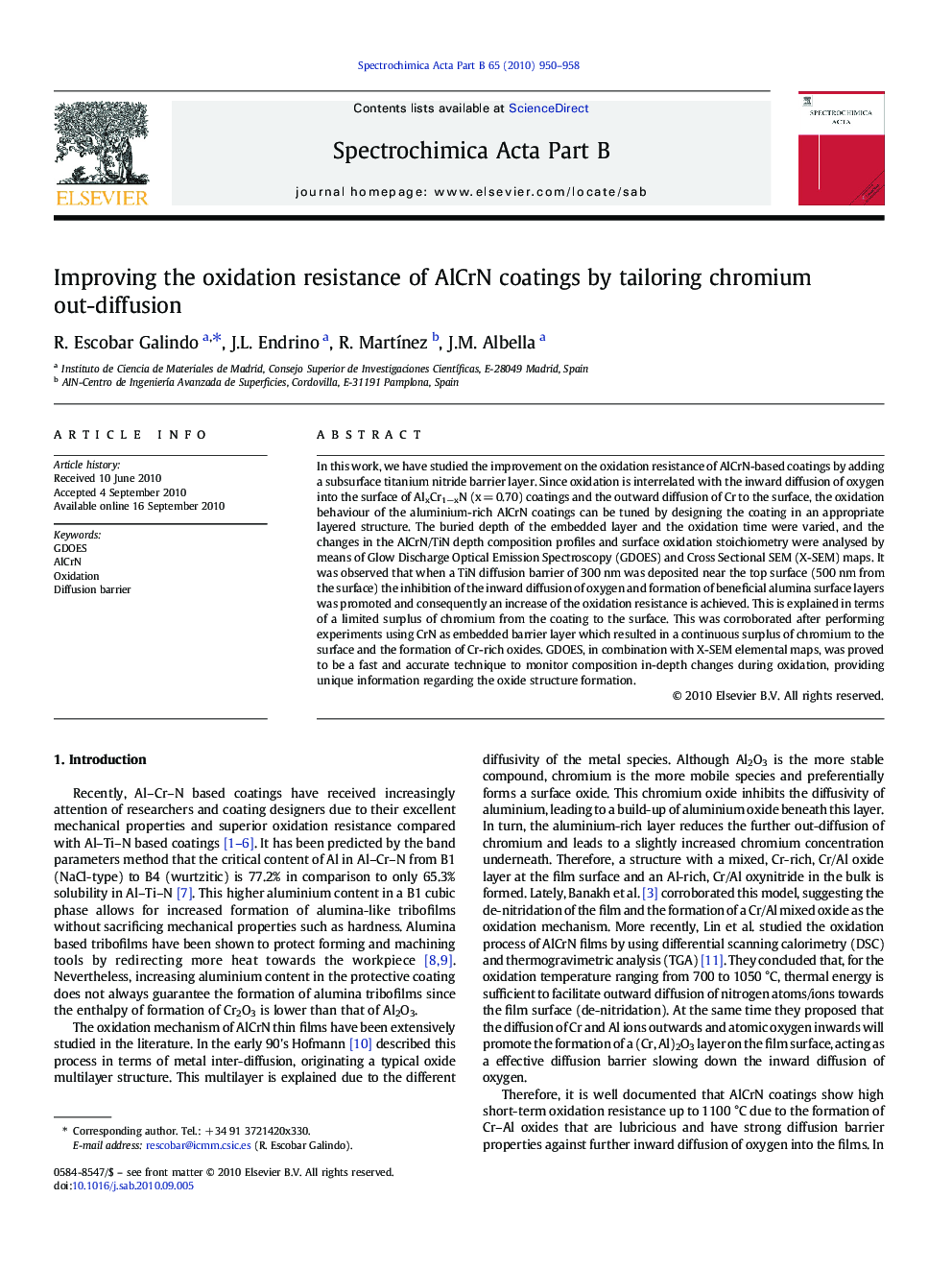| Article ID | Journal | Published Year | Pages | File Type |
|---|---|---|---|---|
| 1240832 | Spectrochimica Acta Part B: Atomic Spectroscopy | 2010 | 9 Pages |
In this work, we have studied the improvement on the oxidation resistance of AlCrN-based coatings by adding a subsurface titanium nitride barrier layer. Since oxidation is interrelated with the inward diffusion of oxygen into the surface of AlxCr1−xN (x = 0.70) coatings and the outward diffusion of Cr to the surface, the oxidation behaviour of the aluminium-rich AlCrN coatings can be tuned by designing the coating in an appropriate layered structure. The buried depth of the embedded layer and the oxidation time were varied, and the changes in the AlCrN/TiN depth composition profiles and surface oxidation stoichiometry were analysed by means of Glow Discharge Optical Emission Spectroscopy (GDOES) and Cross Sectional SEM (X-SEM) maps. It was observed that when a TiN diffusion barrier of 300 nm was deposited near the top surface (500 nm from the surface) the inhibition of the inward diffusion of oxygen and formation of beneficial alumina surface layers was promoted and consequently an increase of the oxidation resistance is achieved. This is explained in terms of a limited surplus of chromium from the coating to the surface. This was corroborated after performing experiments using CrN as embedded barrier layer which resulted in a continuous surplus of chromium to the surface and the formation of Cr-rich oxides. GDOES, in combination with X-SEM elemental maps, was proved to be a fast and accurate technique to monitor composition in-depth changes during oxidation, providing unique information regarding the oxide structure formation.
